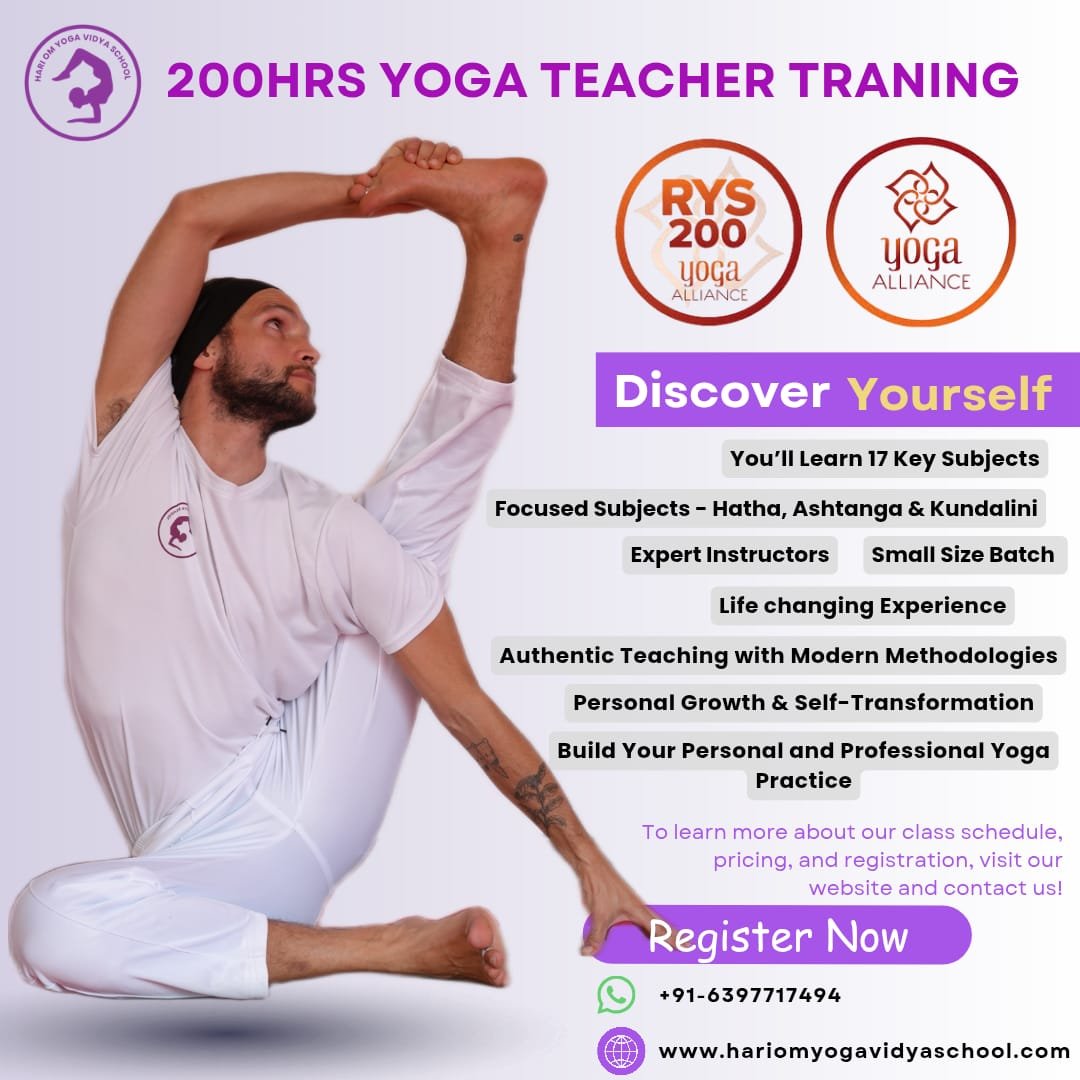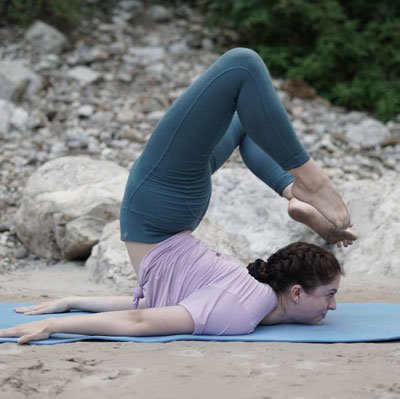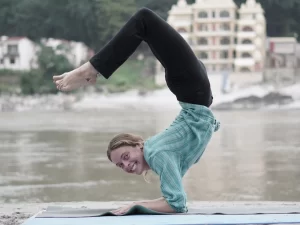What is Matsyasana?
Matsyasana is a beginner level pose, which you have to do in Padmasana, followed by a back-bend. The asana is such that, your complete upper body gets a stretch. It also increases the flexibility and length of the torso. You will also be able to improve on the overall posture. The mention of the pose or asana can be traced back to the Gheranda Samhita. It is believed that the Fish pose or the Matsyasana makes you float like a fish.
It is also believed to be dedicated to Lord Vishnu. The name has been derived from the Sanskrit texts, according to which:
- Matsya means ‘Fish’
- Asana means ‘Pose’
You can do this asana quite easily, even if you are a beginner level yoga practitioner. However, you need to master Padmasana first and also develop focus. You also need to develop co-ordination of the body. It is a part of the primary series of Ashtanga Yoga. It is associated with the opening of the throat chakra.
Read More: Why Is Kundalini Yoga Dangerous? The Truth About Its Risks and Rewards
How To Do Matsyasana (Fish Pose) ?
- You have to lie on the ground in a supine position. Moreover, you have to lie on your back, with both the arms on the sides. The palms of both hands face downwards.
- You have to cross your legs in Padmasana. Then, place the arms with palms down again. Take a deep breath.
- Exhale, and lower the legs in the cross-legged stance, towards the floor. At the same moment, with the support of the arms and the elbows, arch your back and lift your chest and neck off the floor.
- Turn your head towards the back, with your crown resting on the floor.
- Hold the big toes or the entire feet, while pressing your elbows into the floor. Increase the arch of the back.
- Hold this position for 5 breaths. Close your eyes or you can also gaze at the ceiling.
- Keep in mind, that you have to keep your chest arched and spine straight, while performing the pose. The neck ought to be stretched.
- After you are one, exhale and release the arch. Rest the head on the floor again and lie flat on the ground.
- Inhale and then release the legs and sit. You can also sit in Padmasana.
- Repeat on the other side, by changing the direction of the crossed legs.
Modifications and Variations Of Matsyasana – Fish Pose
- You can also use props in the beginning. A rolled blanket inserted under the back spine can help you to achieve the arched posture, quite easily.
- More often than not, beginners experience a strain in the neck. In such cases, you can place a folded blanket below the neck or head as well.
- Sometimes, you may feel a lot of pressure on the crown of the head. In such cases, you can place a folded blanket or a block under the crown.
- You can also take assistance from your yoga teacher or your friend to help you to perfect the pose.
If you are having problems, while keeping the legs in Padmasana pose, then you can keep them straight in the beginning. In this position, the forearms rest on the floor. The other directions remain the same.
You have to inhale and exhale when you are doing the asana. Stay for 5 breaths in the chest arched or lifted posture. Your gaze should be towards the ceiling, or Urdhva-Drishti, or you can also keep your eyes closed. Additionally, you can do Bruhmadhya.
Safety Precautions Decoded
There are a few precautions which you need to follow.
- You should not exert too much pressure on the crown. If you feel uncomfortable in that position, you can lay the head flat on the ground.
- Do not stretch your body, more than its capacity.
- You should always perform this pose empty stomach, or maintain a gap of at least 4 hours between your last meal and your practice session.
- You should not put too much strain on the neck. Allow it to form a natural arch with the spine.
Contraindications of Matsyasana
If you are fit and fine, then achieving this pose, may not be a huge thing for you. However, if you are a beginner, or have some body issues, you should keep the following in mind.
- Avoid the pose, if you suffer from Spondylitis.
- If you suffer from migraine, high or low blood pressure, and heart ailments, then you should avoid the asana or pose.
- If you had any recent injury in the neck, elbows, back, or abdomen, or had a surgery, then you should avoid the asana.
- Expectant women should not practice Matsyasana.
What Are The Benefits of Matsyasana – Fish Pose
If you practice this asana or pose on a regular basis, then you can enhance the flexibility of the spine or that of the whole upper body. It also aids in the increase of strength in the hips and spine.
- This asana also increases the flow of blood, to the head and the brain. Thus, providing a lot of nourishment to the pineal and pituitary glands. It leads to an improvement in conditions such as stress, anxiety, and depression.
- Matsyasana tones the muscles and bones of the neck and the shoulder. This helps in the opening of the muscles of the neck and shoulders.
- Moreover, it also improves their alignment.
- You can also get rid of stiffness from the shoulder and the neck region.
- Matsyasana is a great chest-opener asana. It helps to increase the chest capacity and increase the lung capacity as well. You will be able to get rid of respiratory problems, after continuous practice.
- The Fish pose or asana also tends to massage the Thyroid and Parathyroid glands, which positively regulates the metabolism and calcium levels within the body.
- Matsyasana provides a gentle stretch to the organs in the abdomen, so you will also be able to get rid of the digestive issues.
- You can also get relief from menstrual pain.
- This asana also helps in improvement in conditions such as insomnia.
- It also stimulates the Throat Chakra and the Heart Chakra. This leads to the conversion of all types of negative energies into positive ones. It also leads to elevated self-expression.
Read More: Everything You Need to Know About Kundalini Yoga Teacher Training
Deepen Your Yoga Practice with Hari Om Yoga Vidya School
Located in the heart of Rishikesh, Hari Om Yoga Vidya School is a place where ancient yogic wisdom meets modern teaching techniques. As a top yoga school in Rishikesh, we are committed to providing authentic, immersive yoga education in a peaceful, spiritual setting. Recognized as one of the best yoga schools in Rishikesh, we offer structured training programs designed to help you evolve in your practice, whether you are a beginner or an experienced yogi.
If you’re searching for a yoga school in Rishikesh that focuses on holistic learning, experienced teachers, and a supportive community, look no further!
Explore Our Yoga Teacher Training & Retreats
At Hari Om Yoga Vidya School, we offer a range of courses tailored for different levels of practitioners:
✅ 100-Hour Yoga Teacher Training in Rishikesh – A foundational course for those looking to begin their yoga journey.
✅ 200-Hour Yoga Teacher Training in Rishikesh – An internationally recognized certification for aspiring yoga teachers.
✅ 300-Hour Yoga Teacher Training in Rishikesh – Advanced training to deepen your practice and refine your teaching skills.
✅ 7-Day Yoga Retreat in Rishikesh – A rejuvenating escape into yoga, meditation, and self-discovery.
✅ 10-Day Yoga Retreats in Rishikesh – A transformative experience that blends yoga, relaxation, and Himalayan serenity.
Join us for a life-changing experience and become part of our global yoga family! 🌿✨





